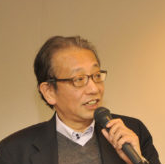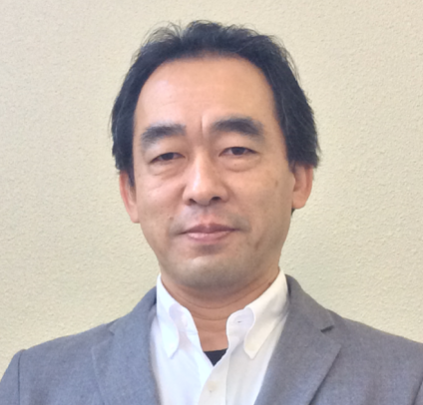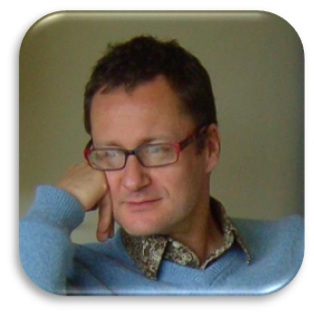Keynote Speakers
Martin DOUGIAMAS マーティン・ドゥーギアマス
Moodle Founder and CEO ムードル本部 (オーストラリア)
Founder and CEO of Moodle, Martin Dougiamas is best known as leading the team of software developers at the heart of the Moodle project. Martin has a mixed academic background in Computer Science and Education, and his major goal for the future is to improve the quality of education by encouraging social constructionist and collaborative practices within online learning communities. ムードルの創始者であり、CEO。ムードルプロジェクトのリードプログラマーでもある。コンピュータ科学と教育学という二つのバックグラウンドを持つ。オンラインで学ぶコミュニティーで社会構成主義と協働を促進することにより教育の質を高めることをゴールとしている。
Talk 講演テーマ
What is the Future Moodle?: Moodle 3.6, MoodleNet and the Roadmap Ahead ムードルの将来構想:ムードル3.6、MoodleNet そして 今後のロードマップ
Abstract 概要
The newest Moodle is version 3.6 and it was just released in December. In many ways, this release has made dramatic changes to Moodle that deserve the "level up” ranking of a major release. In this presentation, Martin will demonstrate the new core changes of Moodle, the growing native HTML5 compatibility that will help educators and learners become more active. Second, he will outline the vision of the upcoming MoodleNet release, which ushers in collaborative teaching across institutions, across nations, and across world-wide educational networks. In addition, he will outline directions of change on the horizon that will continue Moodle’s leadership as the global open-source learning management system. 最新のムードルのバージョンは12月にリリースされたばかりの 3.6 である。このリリースは、メジャーリリースの中でもレベルアップに相当するムードルに多くの点で劇的な変化をもたらした。この講演では、ムードルの核となる部分の変更点を示し、教育者と学習者の両方が活躍できるようにHTML5のコードを増やしていることを指摘する。次に、導入予定のMoodleNetの構想を述べる予定である。その中身は、教育機関同士、国を超え、全世界の教育ネットワークを超えた協働学習の始まりを告げている。更に、グローバルなオープンソースLMSとしてのリーダーとしてムードルを位置づける将来構想も述べる予定である。
Seishi Ono 小野成志
NPO CCC-TIES Vice President and Musashi Academy Director NPO法人サイバーキャンパスコンソーシアムTIES副理事長、武蔵学園理事
Seishi Ono is Vice President of NPO CCC-TIES and Director of Musashi Academy of the Nezu Foundation. He is interested in EdTech (education technology) using blockchain in education including online education such as MOOCs. His interests are also the Internet operation technology, the distributed artificial intelligence, the machine learning systems, knowledge-based systems, and knowledge communities. インターネット運用技術に長年携わってきた一方で、MOOCなどのオンライン教育の研究にも携わってきた。現在はブロックチェーンをはじめとするEdTech (education technology) に関心がある。
Toshihiro KITA 喜多 敏博
Professor at the Institute for e-Learning Developmenteラーニング推進機構教授
Professor Toshihiro Kita teaches at the Institute for e-Learning Development in the Graduate School of Instructional Systems of Kumamoto University. He has a Ph.D. in engineering from Nagoya university and certified accreditation (research guidance) from his academic advisor for the Ph.D. program in the Graduate School of Engineering, Kyoto University. He served as an assistant professor in the Faculty of Engineering and associate professor at the Center for Multimedia and Information Technologies, both in Kumamoto University. His interests include e-learning systems, nonlinear systems and electronic music. 京都大学大学院工学研究科博士後期課程研究指導認定退学,熊本大学 工学部助手,総合情報基盤センター准教授。工学博士(名古屋大学,2005年)。eラーニングシステム,LMS/VLE,非線形システム,電子音楽に興味を持つ。
Talk 講演テーマ
Education and Blockchain 教育とブロックチェーン
Abstract 講演概要
Blockchain first appeared in a paper by Satoshi Nakamoto in 2008 as a fundamental technology required for cryptocurrencies such as bitcoin, thereafter becoming a darling in the field of FinTech (financial technology). After another cryptocurrency (the open-source Ethereum) had succeeded in integrating smart contract functionality with instruction sets close to “Turing-complete”, the scope of blockchain technology spread and it was then not limited to FinTech Research and development, but was being promoted in various other fields.
In the field of education, issuing of graduation certificates that are almost impossible to tamper with due to the high security inherent in blockchain technology, has already taken place. In the next stage, learning itself may be reformed via blockchain technology.
In this presentation, we introduce the latest information in the field of education where blockchain technology is being used and introduce research into the CHiLO Chain, a next generation education system the NPO CCC - TIES is working on. ブロックチェーンは、仮想通貨ビットコインの基盤技術として、2008年にSatoshi Nakamotoの論文に登場し、瞬く間に、FinTech(financial technology)の分野の寵児となった。 さらに、別の仮想通貨の一つであるイーサリアムがブロックチェーンにチューリング完全に近いプログラミング言語によるスマートコントラクトを実装することに成功した後には、ブロックチェーン技術の範囲は、FinTechに限らない多くの分野での研究開発がすすめられている。
教育の分野では、まず、ブロックチェーンの高い安全性に基づく改竄することの難しい証明書の発行が実際に運用されるまでに至っている。
Moodleはv.3.6からオープンバッジv2の利用が可能となった。このオープンバッジの証明書の信用力の担保のために、ブロックチェーンを利用しようとするアイデアがあり、オープンバッジをブロックチェーン上で利用できるようにするプラグインも存在するが、まだ発展途上段階にある。
ただ、ブロックチェーンの可能性は、それだけでは終わらない。次の段階では、学びそのものがブロックチェーンによって改革されると考えられている。
本発表では、ブロックチェーンの教育分野における最新情報を紹介し、NPO CCC-TIESが取り組んでいるMoodleにも自然な形で組み込むことができる次世代教育システムCHiLO Chainの研究を紹介する。
Marcus GREEN マーカス・グリーン
Senior Developer for Titus LearningTitus Learning社の上級開発者
Marcus is a senior developer with Titus Learning, a Moodle Partner in the UK and Hong Kong. Currently based in York, England, he is a qualified teacher with 12 years of classroom experience. Before discovering Moodle in 2003, Marcus had been working on his own automatically graded online quizzes. He released his first Moodle plugin in 2012. Marcus was in attendance at the first ever Moodle Moot in Oxford in 2005 and has since presented at several other major Moots. His Gapfill plugin was the most downloaded question type of 2018. Titus Learningは、イギリスと香港のムードルパートナーである。グリーン氏は、現在イギリスのヨークに在住し、12年間の教育経験を持つ。2003年にムードルに出会うまで、自分で作成したオンラインの自動採点ソフトに携わっていたが、2012年にはそのソフトのムードル・プラグインを作成した。彼は、2005年にオックスフォードで開催されたムードルムートに初めて出席し、その後の主なムートに出席し続けている。彼が作成したGafillプラグインは、2018年には最も多くダウンロードされたquestion typeのプラグインとなっている。
Talk 講演テーマ
What are convenient plugins for teaching? 授業で最も便利なプラグインは何でしょう?
Abstract 講演概要
As smartphone usage around the around the world continues to grow, software development is trending toward a mobile-first approach. Although much educational technology is still designed for desktop, notebook, and tablet computers, there is an increasing demand to bring the full functionality of learning management systems to mobile devices. This has posed a particular challenge to Moodle with its vast array of contributed plugins. The Moodle Gapfill and Wordselect question types were among the first 3rd party plugins to function on the Moodle app. Marcus will detail the challenges of being a pioneer in the creation of app friendly plugins, and discuss the future of contributed plugins in a mobile-first educational landscape. Marcus will also discuss the specific attributes the Gapfill and Wordselect question types and how they compare to the existing alternatives. He will explain how each can be used to create more complex questions as well as their potential role in language learning. スマートフォンの使用率が世界中で増加している中で、ソフト開発は増々スマホ指向となっている。教育用ソフトの開発が、まだまだデスクトップ、ノートブック、それにタブレット向けではあるが、LMSのスマホ上での完璧な操作性の向上が望まれている。多彩なプラグインを持つムードルにとっては、これは大変なチャレンジである。ムードルの Gapfill と Wordselect question type は、モバイル用ムードル上で動作する最初のサードパーティ製ソフトである。モバイル用プラグインを初めて作成するにあたっての詳細と彼の作成したプラグインの将来構想を述べる。彼は、 Gapfill and Wordselect プラグインの特徴を挙げ、他の同様のプラグインとの違いを述べる。言語教育に於いて、各々のプラグインがより複雑な設問を作り上げる方法においても詳述する。
Background Colour
Text Colour
Font Face
Font Size
Image Visibility
Letter Spacing
Line Height
Link Highlight
Font Kerning
Text Alignment
Paragraph Width




